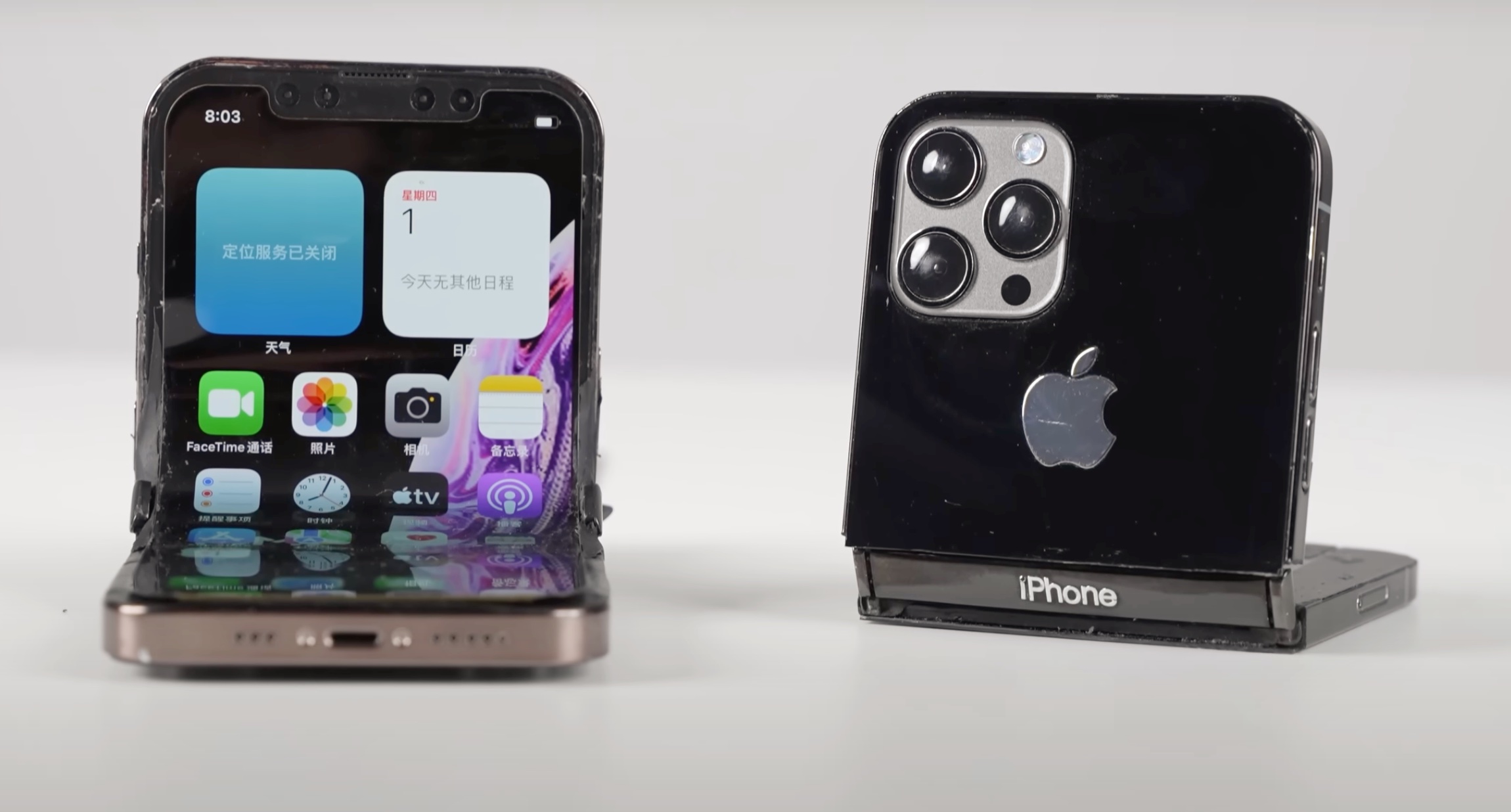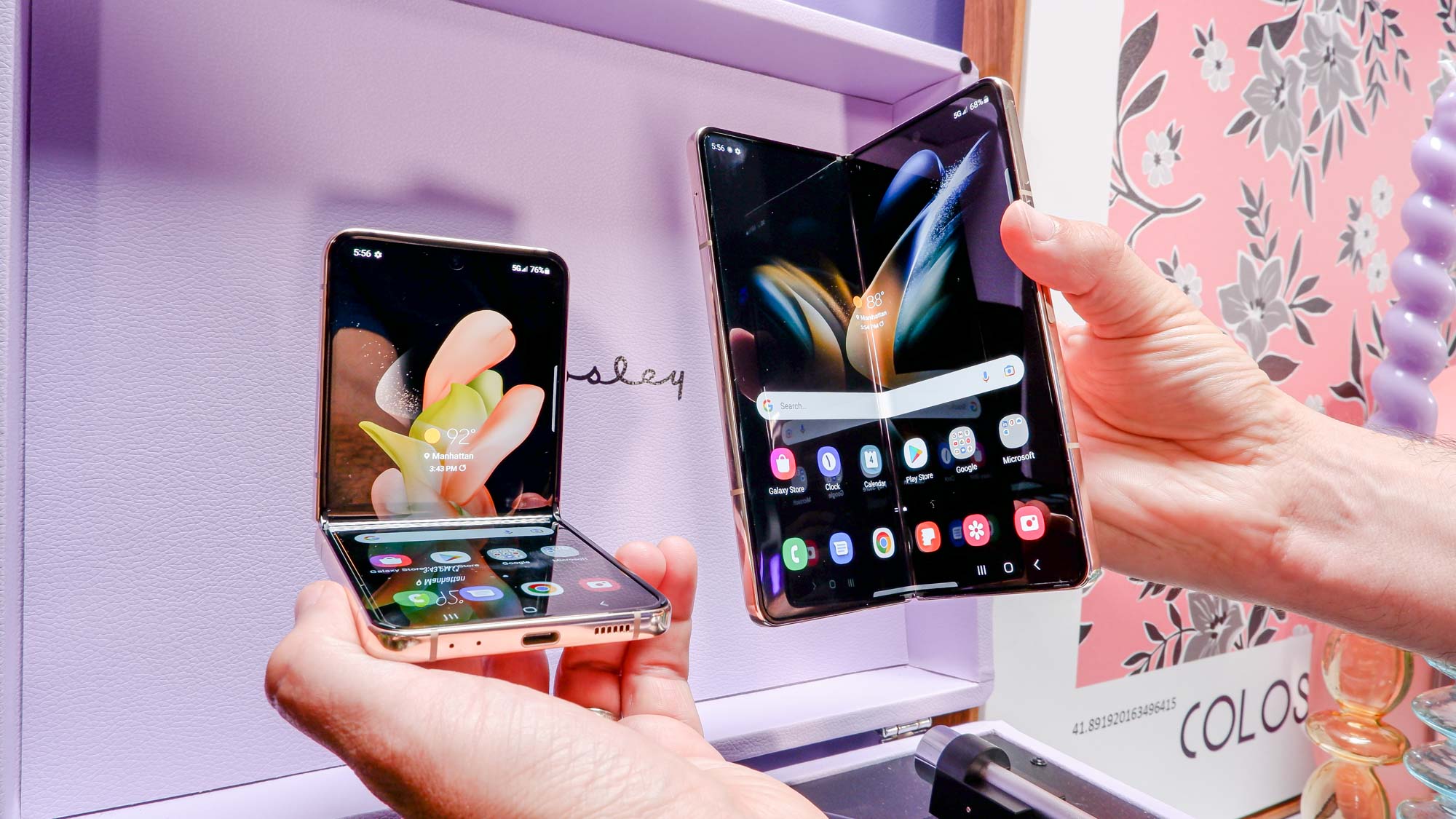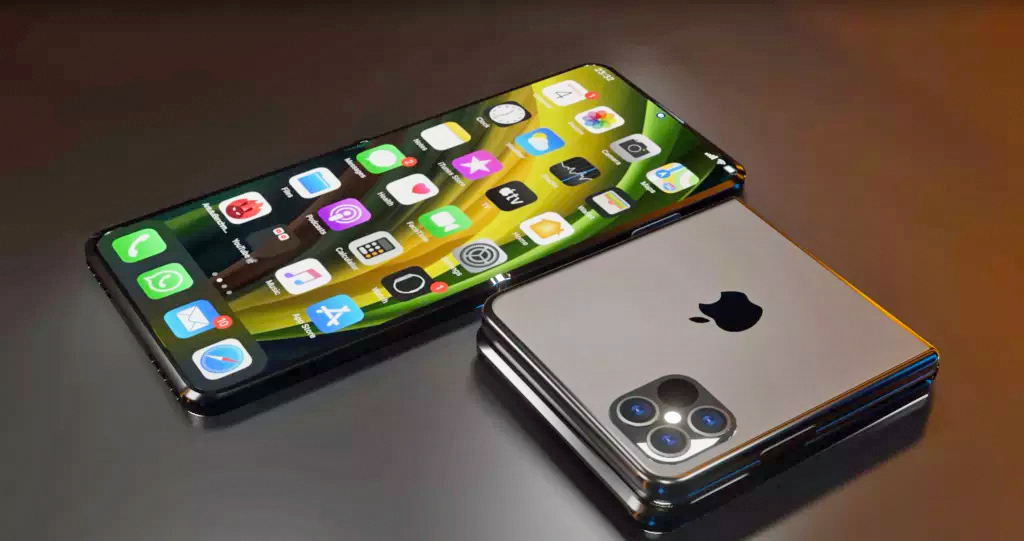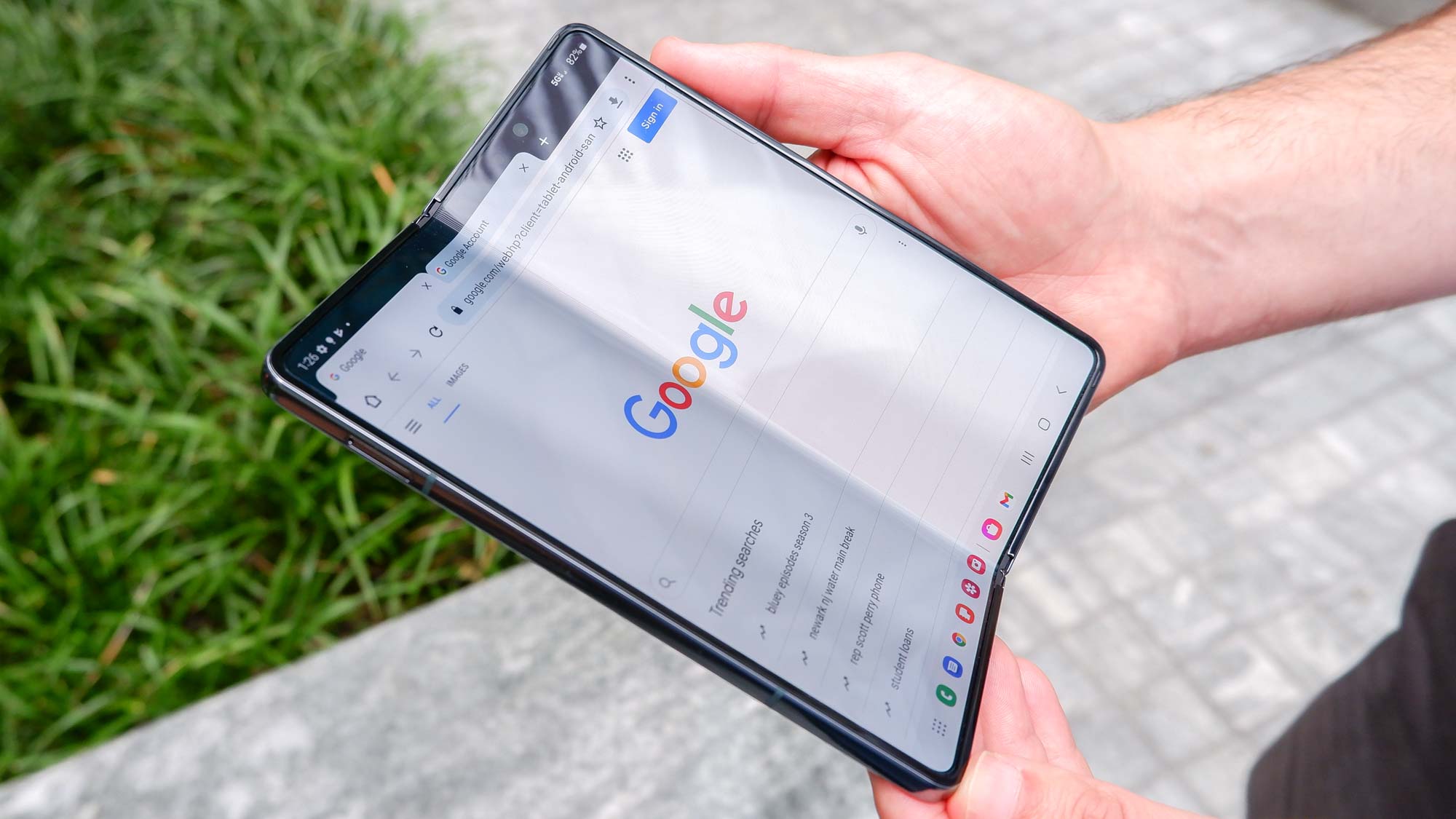More foldable phones are coming later this year — so where is Apple?
Is Apple waiting too long to release the iPhone Flip?

The competition for best foldable phones is expected to heat up this year. Samsung will introduce its usual Galaxy Z Fold and Galaxy Z Flip updates in all likelihood, and OnePlus has confirmed that it's got a foldable device coming, too. If rumors are accurate, Google could enter the mix, too, with its long-rumored Pixel Fold.
One company isn't expected to join them, though. Apple reportedly has a foldable phone in development, but only the most optimistic forecast expects this device to see the light of day in 2023. It's more likely the iPhone Flip, as the rumored device is being called, shows up next year — or possibly even in 2025. There's a rumor we could even seen a folding iPad well before Apple gets around to releasing an iPhone that folds.
I don't want to tell Apple its business — though I usually end up doing that to mixed effect — but it seems like the company is in danger of missing out on the early interest in foldable phones. Waiting another year or two to bring the iPhone Flip to market risks putting the company even further behind its rivals, a position Apple usually doesn't find itself in.
The state of foldable phones
Looking at the current landscape for foldable phones, it's not off-base to conclude that Samsung is enjoying a first-mover advantage. It released its first foldable, the Galaxy Fold, in 2019, with the original Galaxy Z Flip following the next year. Sometime in the second half of 2023 — most likely in August if Samsung sticks to its usual released schedule — we should see the Galaxy Z Fold 5 and Galaxy Z Flip 5, the latest iterations of its two foldables.
The yearly updates to its foldable devices have given Samsung the opportunity to refine their design and add features that take advantage of the foldable design. For example, the Galaxy Z Fold 5 is rumored to feature a new hinge that will lead to a thinner design and possibly eliminate one of our biggest complaints about Samsung's foldables — the visible crease that appears on the display where the phone folds.

In the U.S., Samsung has also established itself as the first and last name in foldables, but in other parts of the world, it faces some competition. Devices like the Motorola Razr, Honor Magic Vs and Oppo's assorted foldables are battling it out for their own slice of the foldable business.
U.S. shoppers will soon have their first real choice in foldables since LG shut down its phone business, ending work on its various dual-screen handsets. OnePlus has confirmed it will have a foldable device in the second half of the year — rumors are pointing to a September release.
U.S. shoppers will soon have their first real choice in foldables since LG shut down its phone business.
Little is known about the OnePlus V Fold, as the device is currently known as, but it's expected to offer a high-resolution display while drawing on the Oppo Find N2 for inspiration. (OnePlus and Oppo are owned by the same company.) That could mean a device with a more refined design than what we've seen from Samsung's Fold and Flip offerings up until now.
The most anticipated arrival could be Google, even if Pixel Fold rumors point to a device that sounds like it will be very similar to the Galaxy Z Fold 4. Instead, what we're eager to see is how Google — which makes the operating system as well as the hardware — can tweak Android with features developed for foldable screens. With the Pixel Fold likely to be powered by one of Google's Tensor chips, we're also curious to see if machine learning-powered capabilities can be developed that are specific to foldable devices.
We could find out the answers to those questions sooner rather than later — the Pixel Fold is rumored to be making an appearance at Google I/O 2023 in May in advance of a release later this year. And if the phone does appear, that would surely ramp up the pressure on Apple to come out with a foldable of its own.
Where Apple can fit into foldables
Assuming all that happens, that's a pretty crowded field for Apple to saunter into a year or two from now. And while Apple never comments on unannounced products, if it did, the company might point out that it's rarely the first to come out with specific product types. Smartphones existed long before the iPhone appeared, for example, but the iPhone was able to dominate the smartphone market by improving upon where other devices had fallen short.
For that reason, it certainly doesn't make any sense for Apple to rapidly release the iPhone Flip — or whatever Apple plans on calling its foldable phone — just because the foldable phone market figures to get more crowded later this year. Instead, an iPhone Flip release date likely depends on when Apple feels that its device is ready to leap ahead of anything that's already out there.

Based on what we've heard about the iPhone Flip, that's not going to happen any time soon. Most speculation about Apple's foldable phone plans center around patents the company has won — never a completely reliable indicator of the final form a product takes. There's not even a consensus on how big a screen the iPhone Flip might feature, with forecasts ranging from 7.5 inches all the way up to 9 inches.
How Apple can still win at foldables
So yes, there's plenty of work to be done between now and whenver an iPhone Flip arrives to take on the soon-to-be-growing number of Android foldables. So how can Apple stand out, even if it winds up being late to the party?
One way would be to come up with a unique design that improves upon what's already out there. Current iPhone Flip rumors describe a device that sounds similar to the Galaxy Z Flip 4, in that it's based around a clamshell design that flips open to reveal a larger screen. Other rumors have claimed Apple is working on something more reminiscent of the Galaxy Z Fold 4, where a phone opens up like a book to reveal a larger interior screen. Those designs are certainly practical, but Apple producing its own take on phones that are already out there won't exactly makes hearts start racing.
A better strategy — and one fitting with Apple's m.o. — would be to improve on what's already out there, and to do so right out of the gate. Samsung has had several versions of its Fold and Flip phones to tweak things, but that's not a luxury Apple's going to get by entering the foldables market so long after everybody else.

The crease that appears on foldable phones remains an area in need of a fix, especially if the rumored improvements to the hinges on the Galaxy Z Fold 5 and Galaxy Z Flip 5 don't do the trick. Seeing a visible crease in the display of your foldable phone can be disconcerting — it's even more off-putting when you feel that crease while using that touch display. So if the iPhone Flip can eliminate that issue, it's a big step in the right direction.
Foldable phones remain pretty bulky — the Galaxy Z Fold 4 tips the scales at 9.28 ounces, a full ounce heavier than the super-sized Galaxy S23 Ultra. We'd like to see Apple find a way to make foldables more portable and easier to pocket.
And while we're drawing up a wish list, we couldn't help but notice that foldable phones struggle to last a long time on a charge — understandable given the size of the displays that need to remain powered up. At the same time, Apple has a good recent track record of squeeing a long battery life out of big-screen phones — both the iPhone 14 Pro Max and iPhone 14 Plus with their 6.7-inch displays are on our best phone battery life list. So maybe that's expertise that Apple can bring to the world of foldables.
It sounds like it will be some time before we see an iPhone Flip ready to take on devices from Samsung and whoever else enters the foldable phone market between now and then. But Apple can make up for that late arrival with a device that exceeds what current foldables are capable of.
More from Tom's Guide
Sign up to get the BEST of Tom's Guide direct to your inbox.
Get instant access to breaking news, the hottest reviews, great deals and helpful tips.
Philip Michaels is a Managing Editor at Tom's Guide. He's been covering personal technology since 1999 and was in the building when Steve Jobs showed off the iPhone for the first time. He's been evaluating smartphones since that first iPhone debuted in 2007, and he's been following phone carriers and smartphone plans since 2015. He has strong opinions about Apple, the Oakland Athletics, old movies and proper butchery techniques. Follow him at @PhilipMichaels.

